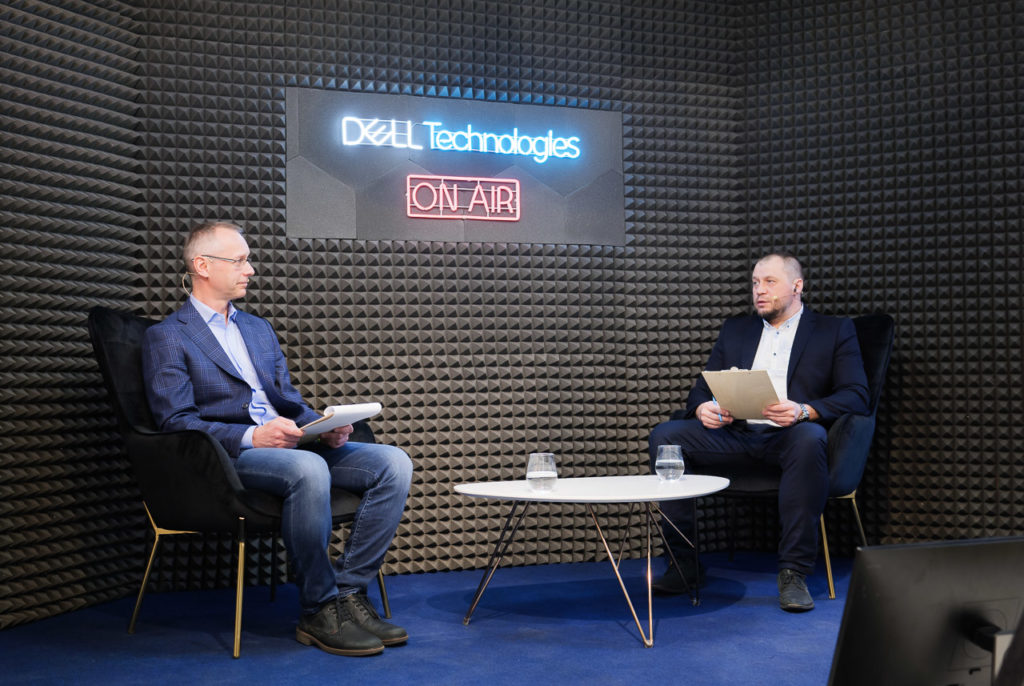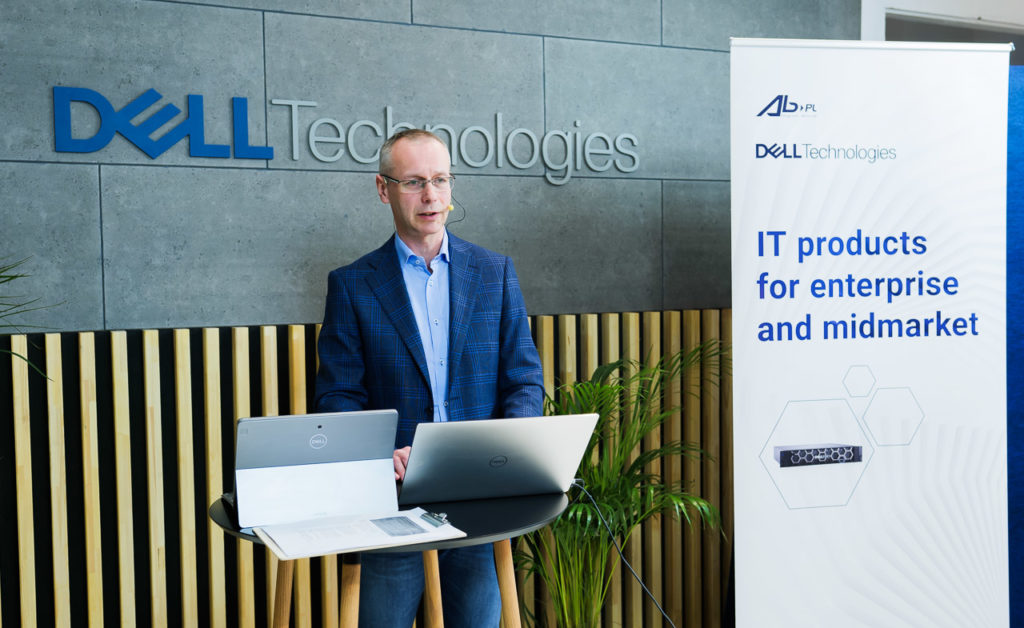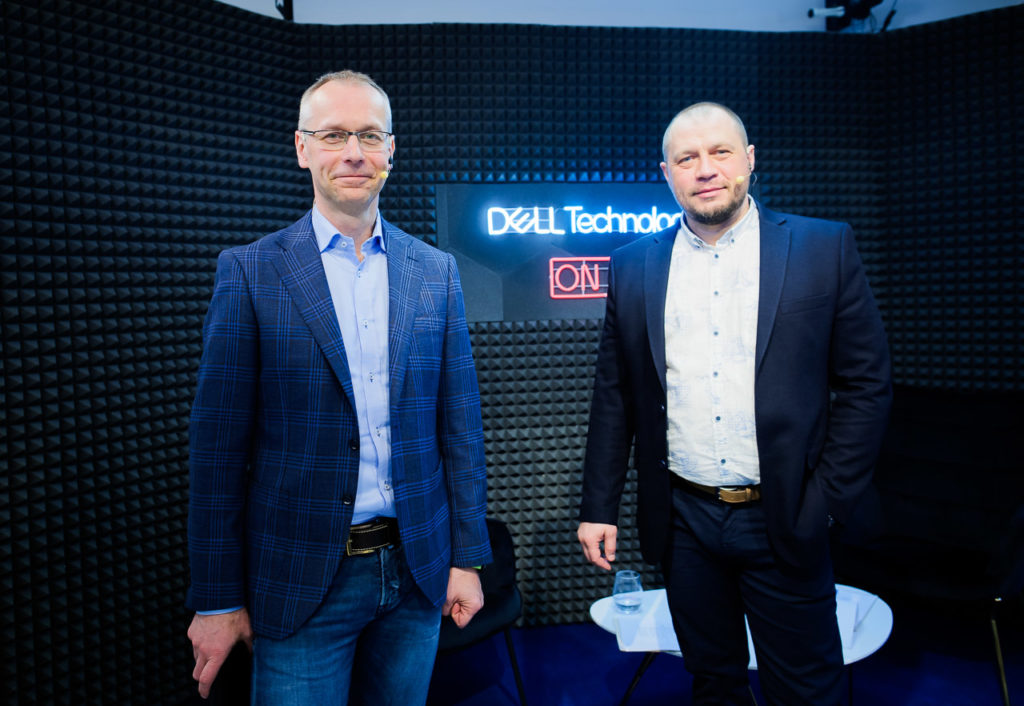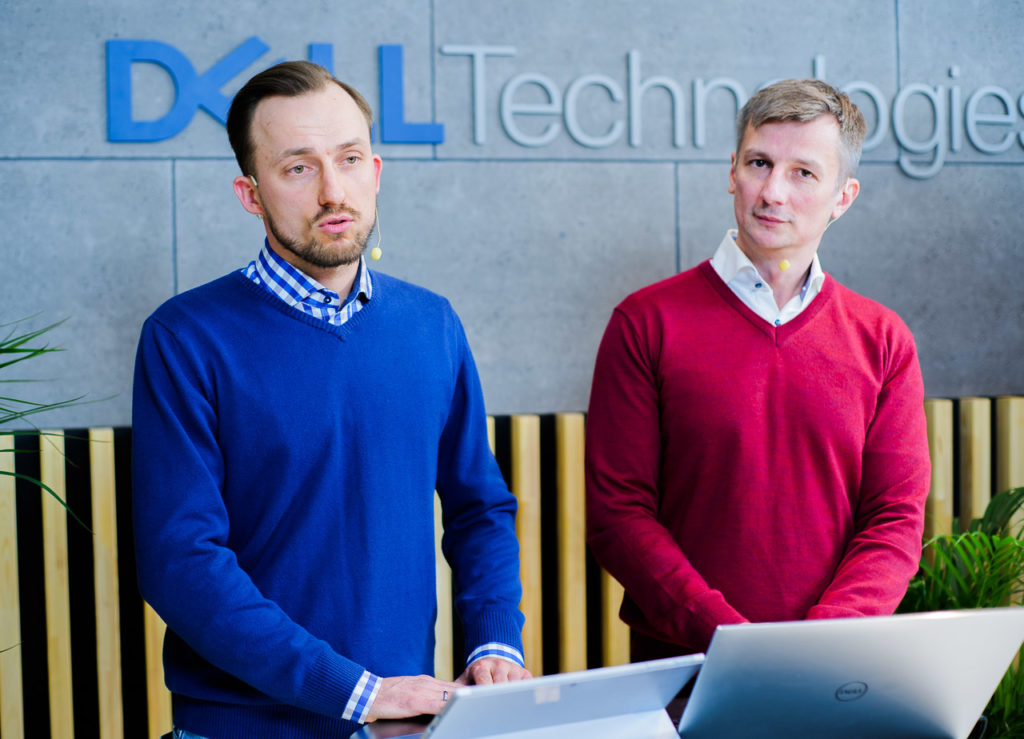Microsoft Azure Stack HCI workshop summary – no slides, just practice.
We strongly encourage you to check out the workshop materials discussing the key principles of Microsoft Azure Stack HCI and the opportunities arising from Dell hyperconverged devices.
The workshop was led by:
- Radosław Janka, Dell EMC Presales Engineer AB
- Marcin Reichman, Microsoft OEM Business Development Manager CEE, Dell Technologies
The workshop was attended by practitioners who deal with hyperconverged infrastructure on a daily basis, namely:
- Szymon Augustyński, Partner Technology Strategist, Microsoft
- Jaromir Kaspar, Principal Engineering Technologist, Dell Technologies
- Waldemar Skrzypiec, Cloud Solution Architect, Microsoft
- Krzysztof Wilk, Senior System Engineer, Dell Technologies

(registration required)
The presenters devoted the first part of the workshop to presenting information about this solution. This part is completed with a practical demonstration of deployment, running, and maintaining an HCI cluster by Jaromir Kaspar, Principal Engineering Technologist at Dell, probably one of the world’s best experts in the field of hyperconverged infrastructure and a specialist in Azure Stack HCI. As emphasized by one of the presenters, Marcin Reichman, the workshop we encourage you to watch is “no slides, just practice. We show live how to configure a cluster, how The Storage Spaces Direct technology works, how to prepare a cluster for the possibility of various failures.” The workshop is therefore a great opportunity to see that Azure stack HCI is definitely an IT-friendly solution. Jaromir’s entire presentation of the practical implementation of the HCI cluster along with the configuration took less than an hour.
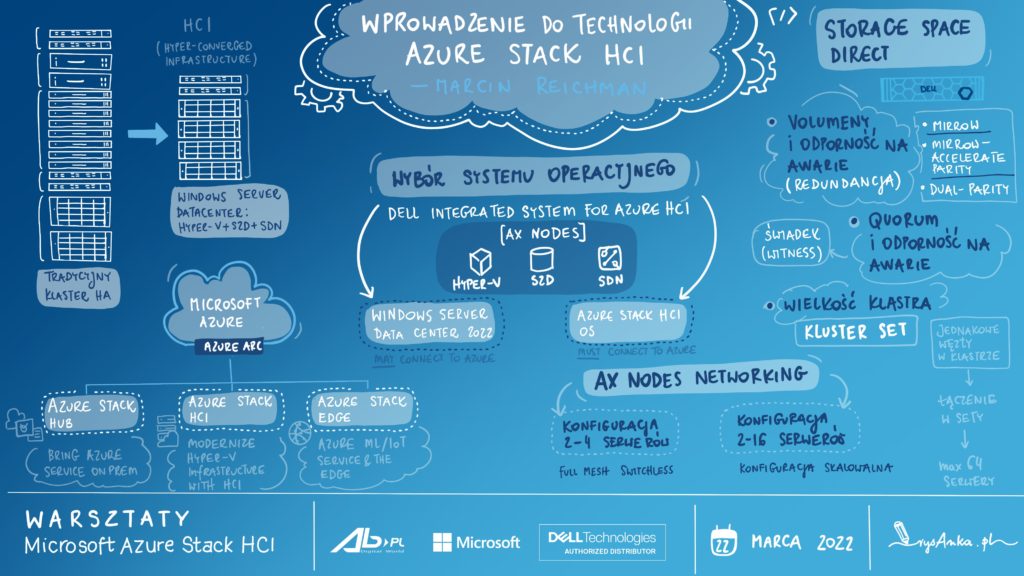
The whole is complemented by graphics in an essential form showing the most important topics presented during the workshop.
What is Azure Stack HCI, how to use it
Before we get into what Azure HCI is, it’s worth explaining what HCI is in general. Hyper-Converged Infrastructure (HCI) is an integrated computing platform that combines compute, storage, and networking solutions, managed through a single administrative console. So, HCI uses from two to dozens of servers with their own disks, but also with software that virtualizes the storage and the network, allowing customers to eliminate from their infrastructure some elements like disk arrays. It is simpler to manage and more modern than traditional high-availability clusters.
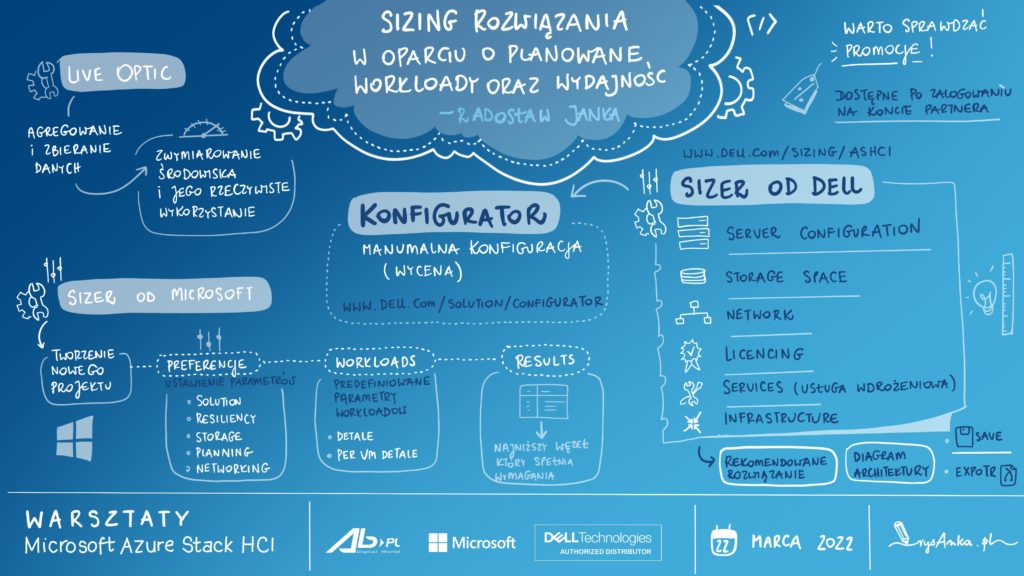
Dell’s collaboration with Microsoft has produced a solution that combines integrated AX servers with Microsoft Azure Stack HCI service. As a result, the Dell EMC Integrated System for Microsoft Azure Stack HCI provides a compelling platform for enterprises that use or want to use Microsoft’s HyperV and S2D virtualization technology. In addition, the AX Dell EMC Integrated Systems for Microsoft Azure Stack HCI enables you to manage the entire cluster lifecycle and use selected Azure public cloud resources on your local HCI cluster while offering complete data security.

Microsoft has been investing in Azure cloud development for several years. Considering the number of local Data Centers in different locations, you can see that despite 70 regions and 160 individual locations, there are still many areas where access to Azure public cloud is difficult. So, Microsoft has come out with the idea that customers can leverage their own on premiseinfrastructure to be able to build a hybrid solution, using their own servers and thus creating hybrid solutions with the public cloud. That’s where Azure Stack HCI comes from.
The first part of the workshop covered key topics including:
- How to configure an Azure Stack HCI cluster
- which operating system should be used: Windows Server Data Center including Storage Spaces Direct, HyperV and SDN or Azure Stack HCI OS and what are the benefits of choosing one or the other? We explain right away that by using this second system, a brand-new OS, the customer gets the ability to manage and create resources on their HCI cluster from within the Azure Cloud. This is a very attractive solution for those who already use Azure and want to build a fully hybrid connection to the public cloud.
- what exactly is Storage Spaces Direct, a feature of Windows Server Datacenter that allows, among other things, to create a large virtual volume of data from different disks (SAS, SATA, SSD disks are supported) and to separate parts of the disks to meet the desired level of disk space redundancy.
as well as
- what integrated AX nodes are and why you should use them in Azure Stack HCI,
- how to design and schedule a Microsoft Azure Stack HCI cluster,
- why ready-to-use AX servers are better than do-it-yourself solutions made
from publicly available servers?
The latter question was answered by Krzysztof Wilk, who did not keep the audience in suspense, saying: Why do we recommend such solutions? Because Microsoft also recommends them. The support provided by Dell also speaks in favor of choosing an integrated system.
In the second part of the workshop, Waldemar Skrzypiec and Szymon Augustyński presented which services available in the Azure public cloud will work best in an HCI cluster with Azure Stack HCI OS. In addition, Szymon Augustyński talks about how to gain the competencies to sell and deploy Azure services on Azure Stack HCI.

Integrated AX Systems for Microsoft Azure Stack HCI is a solution that offers a wide variety of node configurations with integrated deployment and complete and automated IT infrastructure lifecycle management. System integration and automation help reduce manual steps and significantly reduce required maintenance time, while automated clustering helps reduce deployment time and minimizes the risk of human error in the initial deployment process. And the integration of Dell EMC OpenManage with Microsoft Windows Admin Center provides complete lifecycle management of the Azure Stack HCI cluster, including upgrades, easy expansion, and management. Updates to operating systems, BIOS, firmware, and drivers are performed in accordance with the update schedule and do not cause interruption to virtual machines.
Photogallery
